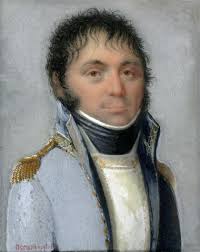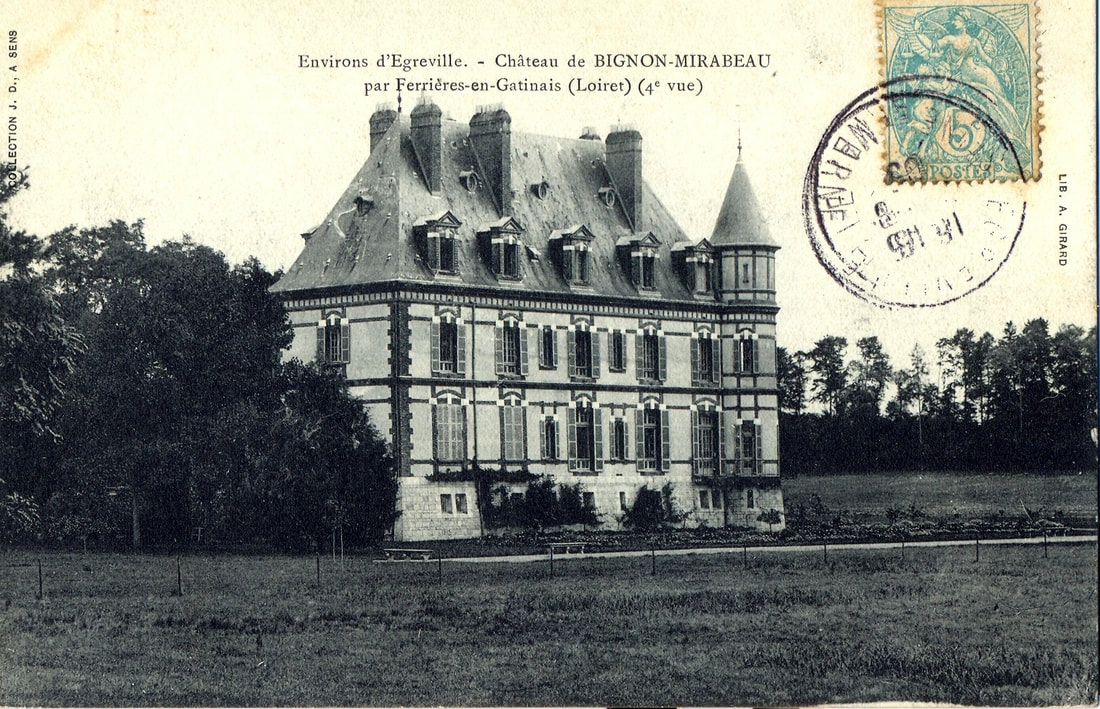|
As I find myself single parenting my son for a whole 12 days, I feel bound to reflect on what it was like, being a single working mother during the French Revolution. Olympe de Gouges, widowed at twenty, her son just one year old, brought him up by herself in Paris while pursuing her career as an actress, then a playwright, and later a political writer. She made sure to pay for him to have private tutors, and may have had help from her sister, also in Paris, to look after him. We know that he came with her to theatrical rehearsals, and eventually became an actor in her troup. By the time she died he was married with one child and another on the way. Under pressure (and perhaps torture) he signed a letter renouncing his mother. A few years later, he wrote and signed a document recusing himself, which he sent to the government, along with two volumes of his mothers' works. Pierre Aubry, Olympe's son, struggled to make a career for himself under Bonaparte, but eventually was sent by him to French Guiana, in South America, at the time slavery was being re-introduced there. Aubry died a few months after arriving, of malaria. His wife remarried, several of their children survived and some of their descendants still live in Australia and the United States. Mary Wollstonecraft found herself pregnant by her American lover during her stay in Paris, and moved alone to Le Havre when her baby girl, Fanny, was born. There she looked after her daughter while writing up her History of the French Revolution. By the time Mary and her daughter came back to England, the relationship with Fanny's father, Imlay, was over. In order to keep them out the way, he asked Mary to go and investigate the disappearance of a cargo of silver on the coast of Norway. Mary went with her daughter and a French maid, clearly not thinking of single motherhood as a reason not to travel. When they came back, Imlay made it clear that he had no intention of spending time or money on his daughter. Mary responded by attempting to commit suicide, leaving the following note for her daughter: I have long determined that the best thing I could do was to put an end to the existence of a being whose birth was unfortunate, and whose life has only been a series of pain to those persons who have hurt their health in endeavouring to promote her welfare. Perhaps to hear of my death will give you pain, but you will soon have the blessing of forgetting that such a creature ever existed. When Mary met her William Godwin, they agreed that he would act as her daughter's father. Unfortunately, she did not live long enough to find out whether that model of parenting would have been a success. Fanny Wollstonecraft did not live a happy or successful life. She lost her mother at the age of 3, and was left in the care of the father of her new sister, Mary. William Godwin remarried a few years later and Fanny and Mary were looked after by their step-mother who cared more for her own daughters than for them. Godwin, although he saw it as his duty to care for Mary's daughter, did not think much of her: My own daughter is considerably superior in capacity to the one her mother had before. Fanny, the eldest, is of a quiet, modest, unshowy disposition, somewhat given to indolence, which is her greatest fault, but sober, observing, peculiarly clear and distinct in the faculty of memory, and disposed to exercise her own thoughts and follow her own judgment. Mary, my daughter, is the reverse of her in many particulars. She is singularly bold, somewhat imperious, and active of mind. Her desire for knowledge is great, and her perseverance in everything she undertakes is almost invincible. My own daughter is, I believe, very pretty; Fanny is by no means handsome, but in general prepossessing. When the girls were teenagers, Percy Blithe Shelley came into their lives and seduced Mary by talking to him about her mothers' life and work. Two years after Mary ran away with the poet, Fanny, left alone with her unkind stepmother and a stepfather who did not care much about her, committed suicide. She was 22.
Sophie de Grouchy was widowed at 30, her only daughter still a toddler. Although she had a support system – her sister and an old nanny – to help her bring up young Eliza, she had to earn the money to feed and house her extended family, and she did that by painting portraits. Eliza Condorcet O'Connor is the one real success story of the three. This is perhaps due to the fact that her mother did not die when she was a toddler and was not tried and executed, thereby ruining her family's reputation and career prospects. By the time Eliza was old enough to marry, her mother had regained most of their family wealth and was able to purchase Mirabeau's old castle for her. Eliza seemed to have lived a long and happy life there, continuing the work her mother had started of editing her father's works. Her descendants still live at the castle
0 Comments
Leave a Reply. |
About
This is where I live blog about my new book project, an intellectual biography of three French Revolutionary women philosophers. Categories
All
Archives
November 2022
|


 RSS Feed
RSS Feed